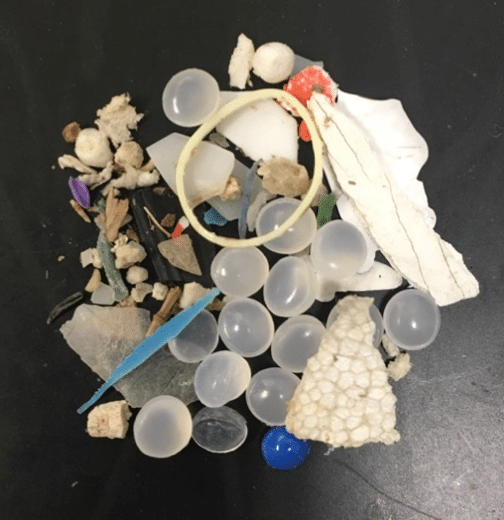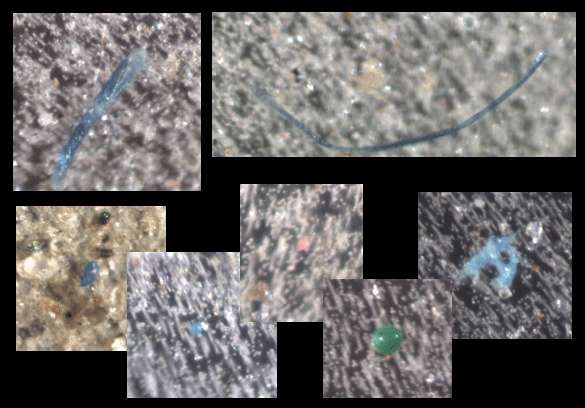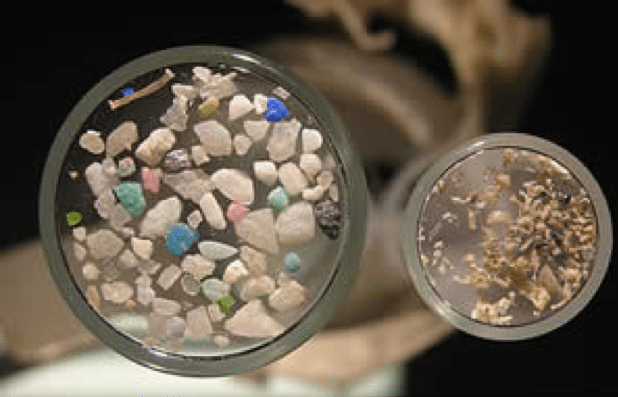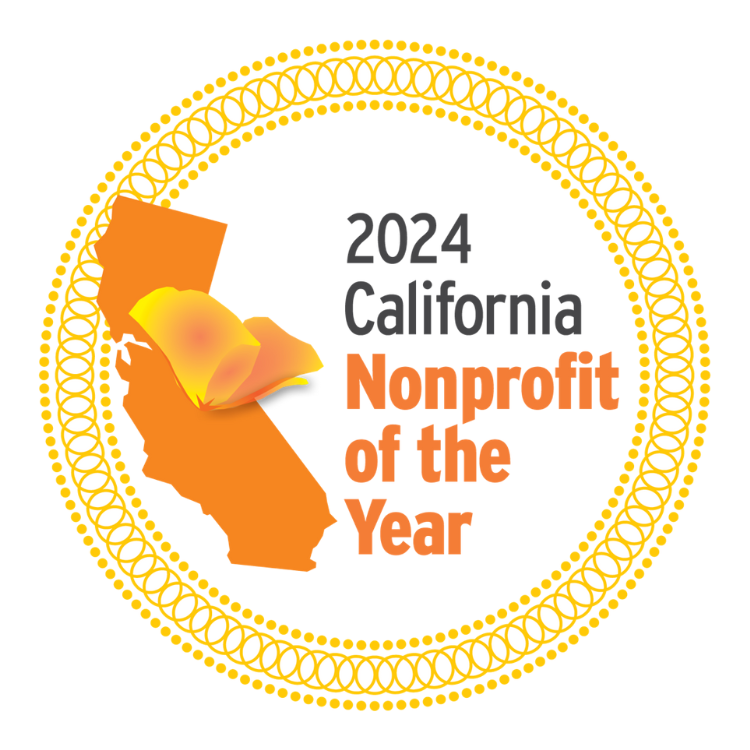For years, environmentalists have been concerned about the impacts of plastic pollution in oceans, lakes and rivers. Much of this concern began with larger, more visible plastic documented in oceans and on shores around the world.
More recently however, concerns have increased around smaller pieces of plastic referred to as microplastics.
Microplastics are tiny plastic pieces that are either produced to be small, such as microbeads in exfoliating products, or produced when larger pieces of plastic break down once they enter the environment.

Visible, large microplastics
Research into microplastics is still in the early stages. However, three main issues have risen to as top priorities:
1. How much microplastic pollution is actually out there?
Advanced methodologies to detect microplastics in the environment are still in development, but the answer so far is – a lot more than we hoped.
Scientists have sampled aquatic environments across the world, from the tropics to the arctic, and microplastics are found in every environment sampled to date.

Microscopic microplastics – seen under a microscope
2. What species ingest microplastics, and what are the impacts?
Hundreds of species across the world have been found with microplastics in their stomachs. This includes several species of fish and shellfish found with ingested microplastics, many of which are sold for human consumption!
The impacts on animal health can range from death to impacted feeding and reproduction. Most of this research has been done in a laboratory and further research on the impacts of microplastic ingestion is underway.

Plastic pieces found in one fish found off the California coast. Picture from: Algalita Marine Research Foundation
3. What chemicals are in microplastics, and what are the impacts?
Pollutants that are already present in aquatic environments can stick to microplastics. These chemicals accumulate to up to 1 million times the concentration of the chemical in the surrounding water!
Additionally, plastics already contain and can leach chemicals, such as plasticizers and dyes.
Combined, these chemicals contribute to a “cocktail of contaminants” that could be harmful to animals that ingest the microplastics.
Most research concerning the amount of microplastics in the ocean focuses on the larger sized visible microplastics. However, this has created a large data gap concerning the amount of microscopic pieces, which are similar in size to plankton – the food source of many marine animals.
My research focuses on the first two issues, the amount of microplastic pollution present in local waterways and the potential impacts of ingestion.
We tested for microplastics in water samples from the Long Beach Harbor, and the two rivers that feed into the harbor, the San Gabriel River and the Los Angeles River. These three areas are surrounded by some of the most highly populated areas of California coastline.
We found hundreds of thousands of microplastics per m3 of water, most of which were the same size as plankton. I will also be testing whether microplastics impact a local zooplankton species’ ability to eat and reproduce and thus affect an important food source for larger marine species.
About the writer:
Kara Wiggin is currently a master’s student at California State University Long Beach studying microplastic pollution in the urban waterways surrounding Long Beach, CA. She is interested in how much microplastic pollution is in the environment, and how it could effect marine life. Her biggest goal is to rid the world of unnecessary single-use plastics.







